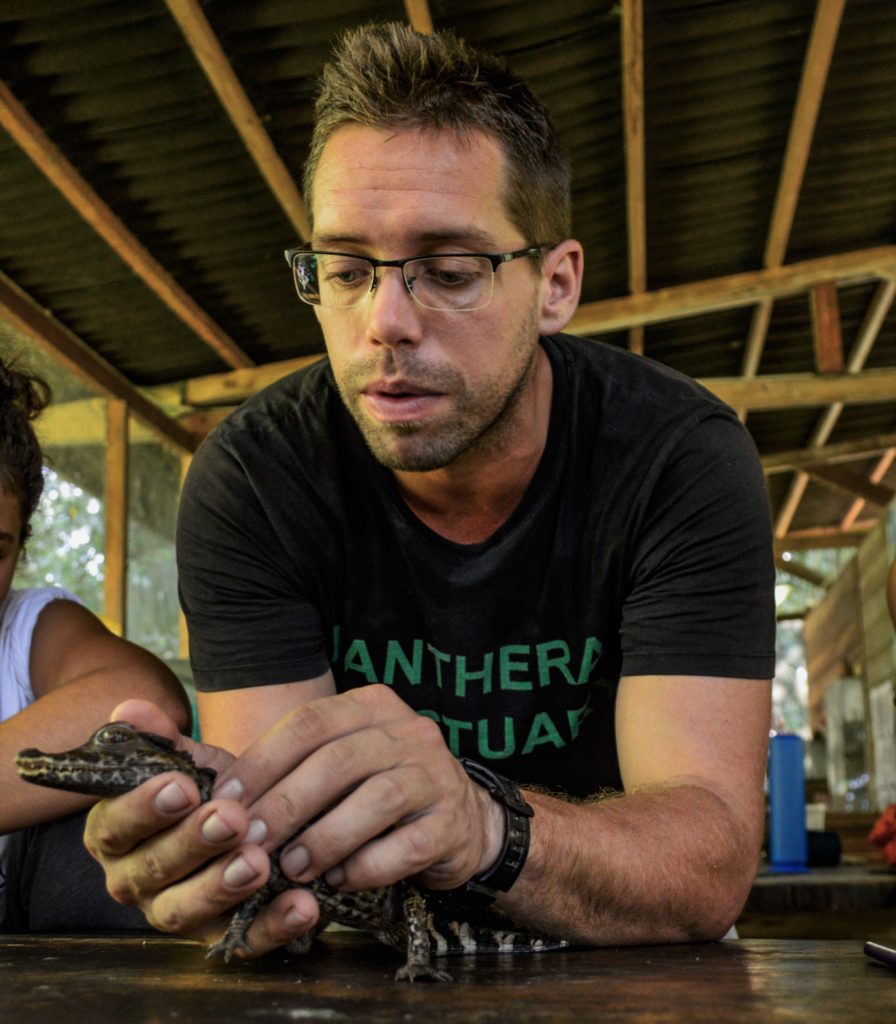
One of the Only Reserves in South America Specialized in Herpetology
Unfortunately, the discretion of these creatures in addition to their overall lack of popularity has led them to become neglected by the general public and even numerous amounts of wildlife conservation organizations. What people often don’t realize is that both amphibians and reptiles encompass many key species that indicate the health of our ecosystems. By studying these animals, we can contribute to the conservation of the Amazon rainforest as a whole.
As a reserve best known for our work in Reptilian & Amphibian Conservation, a great deal of our conservation efforts are attributed to the preservation of individuals, populations and the habitats of target reptile and amphibian species.
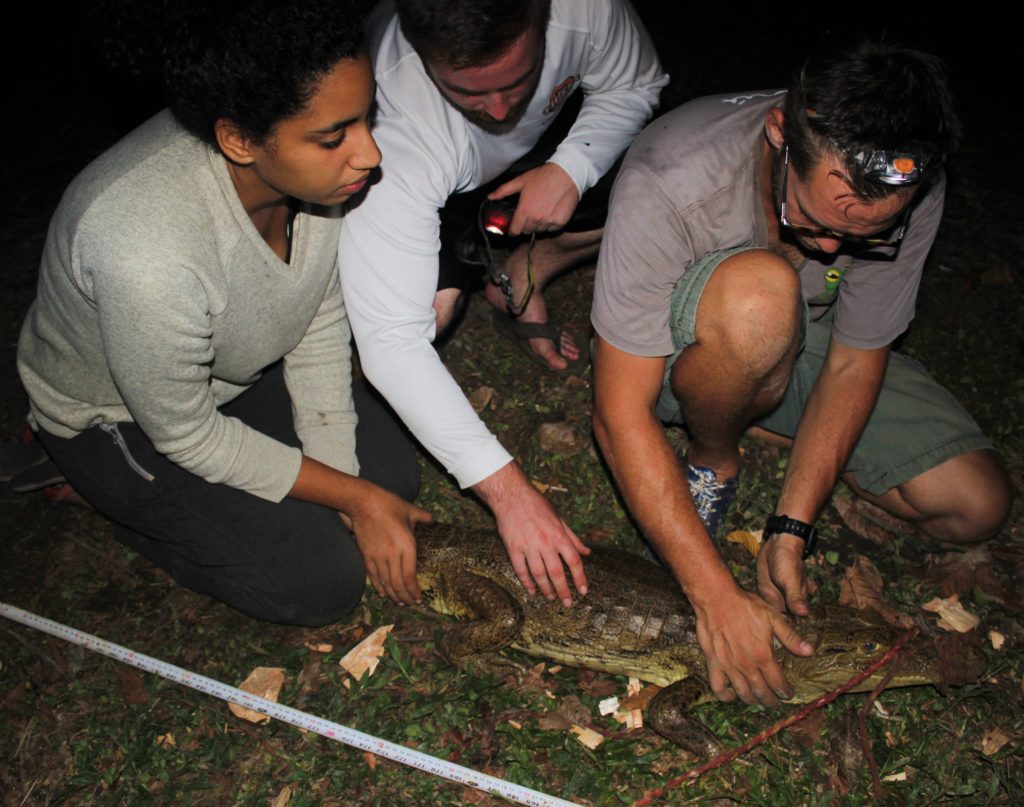
Projects addressing this topic include:
- General Population Surveys of Specimen found on the reserve
- The creation of artificial nesting sites
- Enhancing swamp and other aquatic ecosystems within the reserve
- The rehabilitation and release of snakes (when intervention is necessary)
- Reproduction Programs of target snake species
- Intricate Black Caiman Protection Programs

Learn how to handle (nonvenomous) and identify snake species found in the Amazon!
It’s not uncommon for people to be terrified of intimidating reptiles such as caimans and snakes, in addition to the toxins of amphibians including poison dart frogs. To combat this, we work closely with these animals (handled by trained professionals) and provide educational lectures/discussions about their biology, threats to their survival, and any necessary management plans to conserve their populations. Providing these types of educational opportunities not only debunks common misconceptions most people have about these animals, it also helps individuals overcome their fear and develop both respect and an appreciation for these rainforest creatures.

Despite our Passion & Dedication in Herpetology, we have other specialties with their respective goals in mind…
Amazonian Permaculture—Management of an Organic Food Forest
Our Neotropical permaculture system involves the careful selection and cultivation of native tropical plants with the overall goal of promoting biodiversity and being able to harvest our fruits, vegetables, legumes, roots, and herbs for the reserve’s kitchen use.
We find severely degraded areas such as scorched land, abandoned agricultural plots, or old cattle-grazing spots/pastureland to establish our permaculture sites in. By selecting these types of areas, we can focus on utilizing soil regeneration techniques to build and maintain a healthy soil layer, which in turn enhances both soil fertility and ultimately crop productivity.
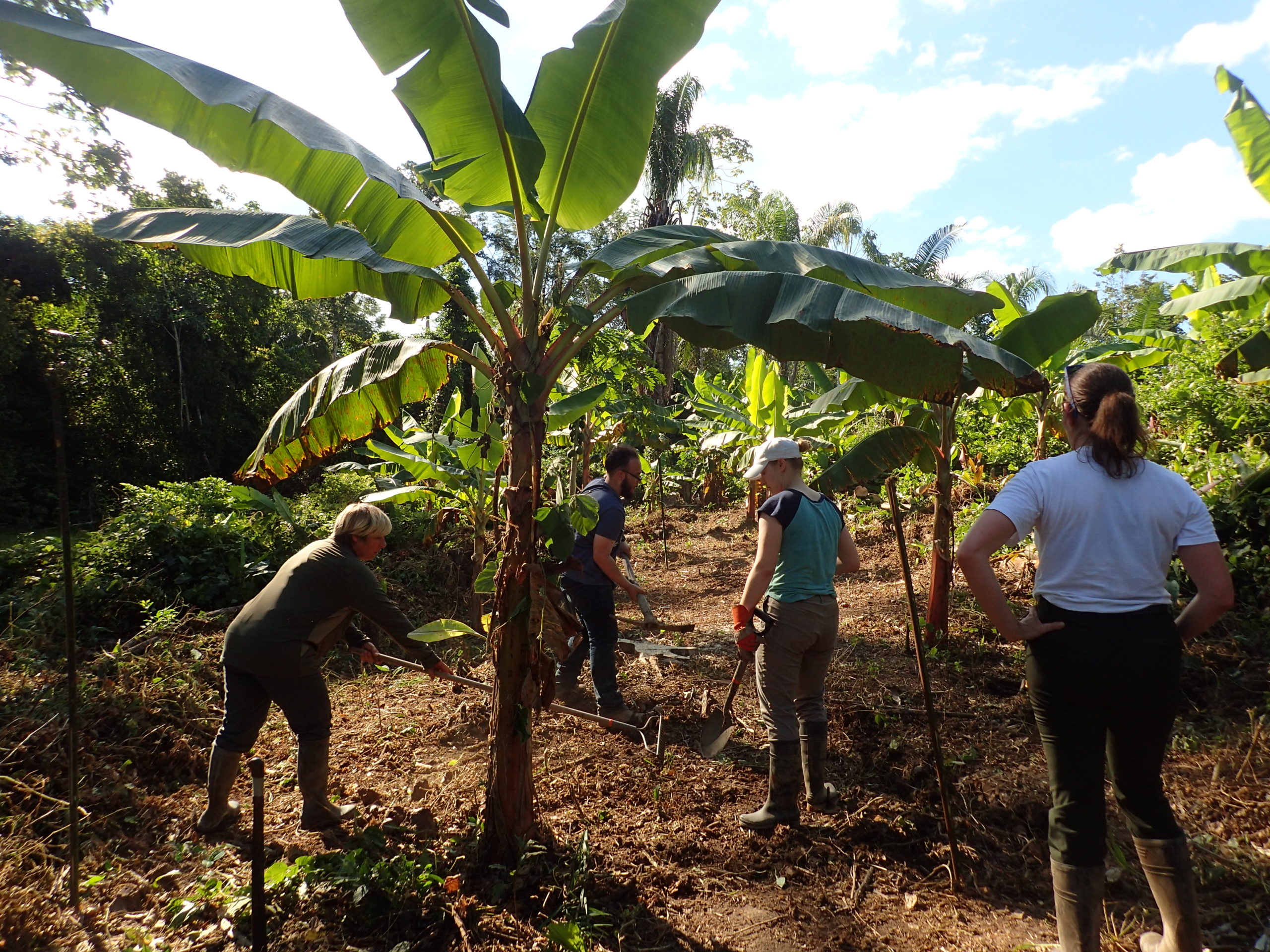
Invasive weed removal and the prepping of soil for local veggie plants
Various tasks incorporated into our Permaculture Project include:
- Planting seeds of various crops in our plant nursery
- Creating and locating fertile black earth for our plants
- Transplanting strong, mature seedlings to their designated sites
- Planting ground cover plants to protect and nourish the soil
- Clearing/maintaining aggressive weeds
- Pruning of sick plant branches
- Creation of Biochar
By using the study of agroecology, we not only have a way to provide food crops for ourselves and other animals to enjoy, we also demonstrate the ability to give these deteriorated and seemingly condemned sites another life by transforming them into healthy and productive ecosystems.
As a result, we can reap the fruits of our labor (pun intended!). Although eating, drying, or making juices from fruits like bananas and juicy pineapples are common, cacao harvesting for our chocolate-making workshop, picking coffee cherries for freshly roasted coffee, and making jam from starfruit, passionfruit, and oranges are among everyone’s top favorites!
Mist netting: catch and release of tropical birds
Peru is home to over 1, 883 species of birds making it a hotspot for bird diversity! Much research is needed on the various species that occupy the Amazonian lowlands to understand the relationships and population dynamics.
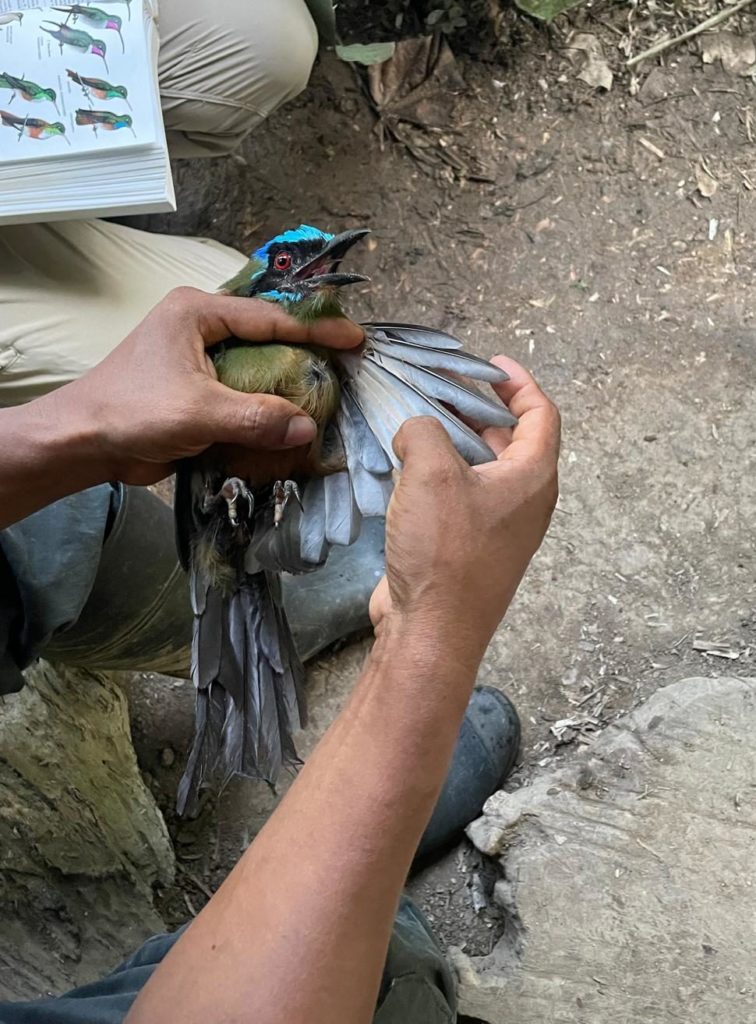
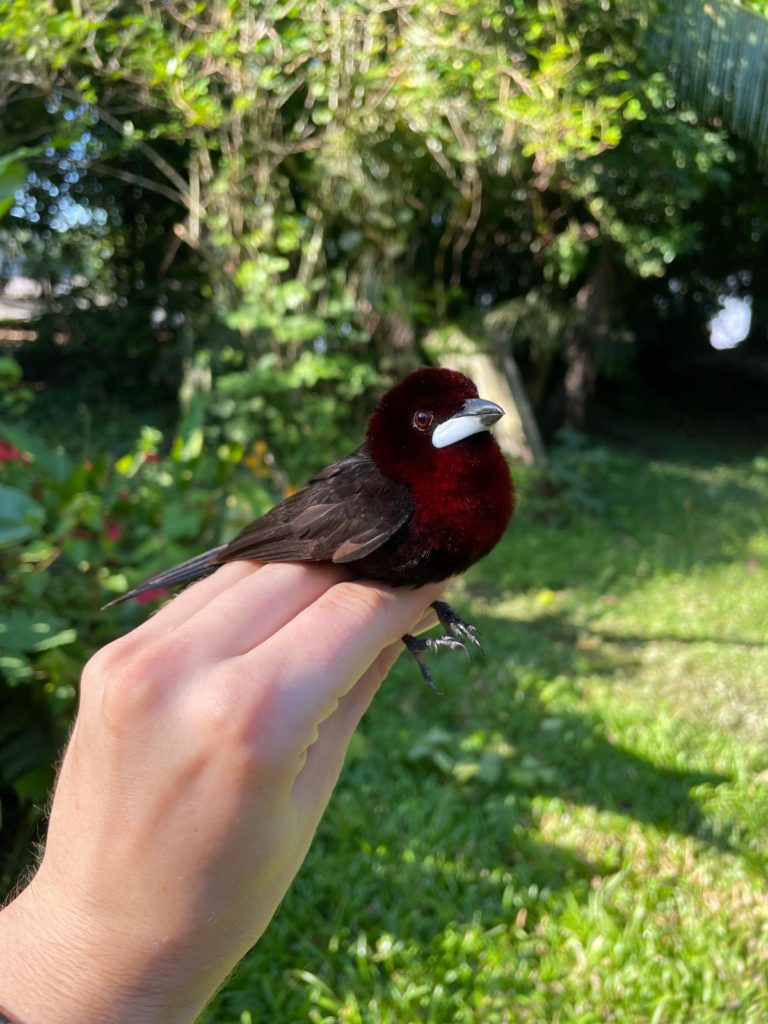
The reserve has incorporated the use of mist nets as a research tool to understand the diversity, population abundance and density of species in the region.
Experts will educate you on the various species encountered at the reserve and handle the birds with care to take data on the condition of individual birds before release.
